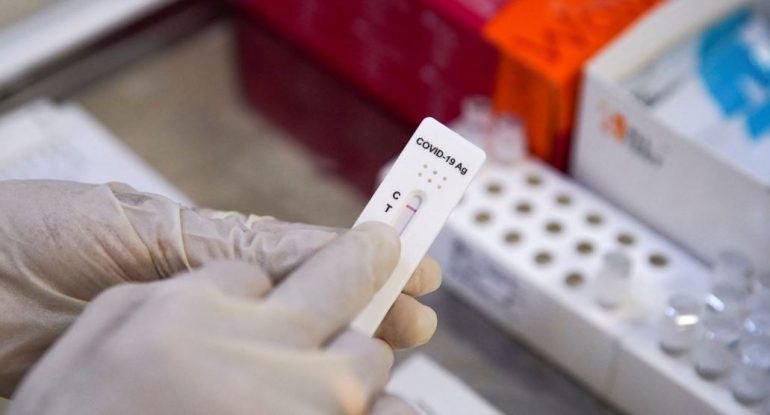At a time when the Omicron variant continues to work, although the data so far show that we have avoided the worst, every day thousands of citizens rush to do a coronavirus test, whether it is PCR (molecular) or rapid or self.
Rapid tests and self tests are essentially based on the same technology, they are both antigen detection tests of the new SARS-CoV-2 coronavirus. The difference lies in the self-examination of the self-test, which we perform alone at home, in relation to the rapid which is performed by a health professional in a private or public structure.
On the other hand, PCR is indicated by citizens who have a strong clinical suspicion of COVID-19. However, the country's authorities have asked vaccinated citizens with a positive rapid test not to come for PCR, because there is a high cost, and to stay at home.
But what happens when PCR comes out positive and rapid or self negative?
In a post on social media, Assistant Professor of Epidemiology and member of the Committee of Experts, Gikas Majorkinis, presents a case of a patient who had passed SARS-CoV-2 asymptomatically within the last month and was infected with another virus that gave a similar symptoms and by chance was found positive in the PCR of SARS-CoV-2, while the rapid test was negative.
The post of G. in detail. Majorkin
Here is an anonymous fact that shows why PCR should be used sparingly and interpreted by qualified personnel in conjunction with the rapid antigen test.
A colleague asks my opinion about an incident where he has symptoms of respiratory and fever, while the rapid antigen test is negative for 2 days. Due to persistence of symptoms (day 3) a molecular SARS-CoV-2 test was requested which came out positive in high cycles (low load). On the 4th day, the rapid antigen test is repeated, which is still negative.
At that time, a syndromic panel was requested, which revealed the real culprit of the fever (parainfluenza virus). The (vaccinated) patient had passed SARS-CoV-2 asymptomatically within the last month and was infected with another virus with similar symptoms and was found to be positive for SARS-CoV-2 PCR.
Conclusions:
1) Positive PCR at low loads with negative antigen probably means old (> 10 days) undiagnosed SARS-CoV-2 infection
2) as the duration of positive PCR-negative antigen is much longer in the escape of the infection (average 17 days, it reaches up to 83 !!! days), the first thing to think about is old infection, despite the onset of infection
3) if the antigen is negative and the PCR is positive, always look at the load (PCR cycles), at low load ask for a repeat of the PCR or a repeat of the antigen after 1 day. If the antigen does not become positive in the next 1-2 days or the load remains low, we should consider alternative diagnoses.
4) I recommend the execution of the syndromic panel in severe cases with prolonged discrepancy between PCR and rapid antigen of SARS-CoV-2.
Source: in.gr
